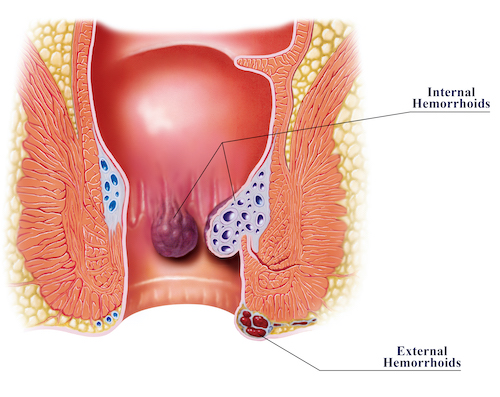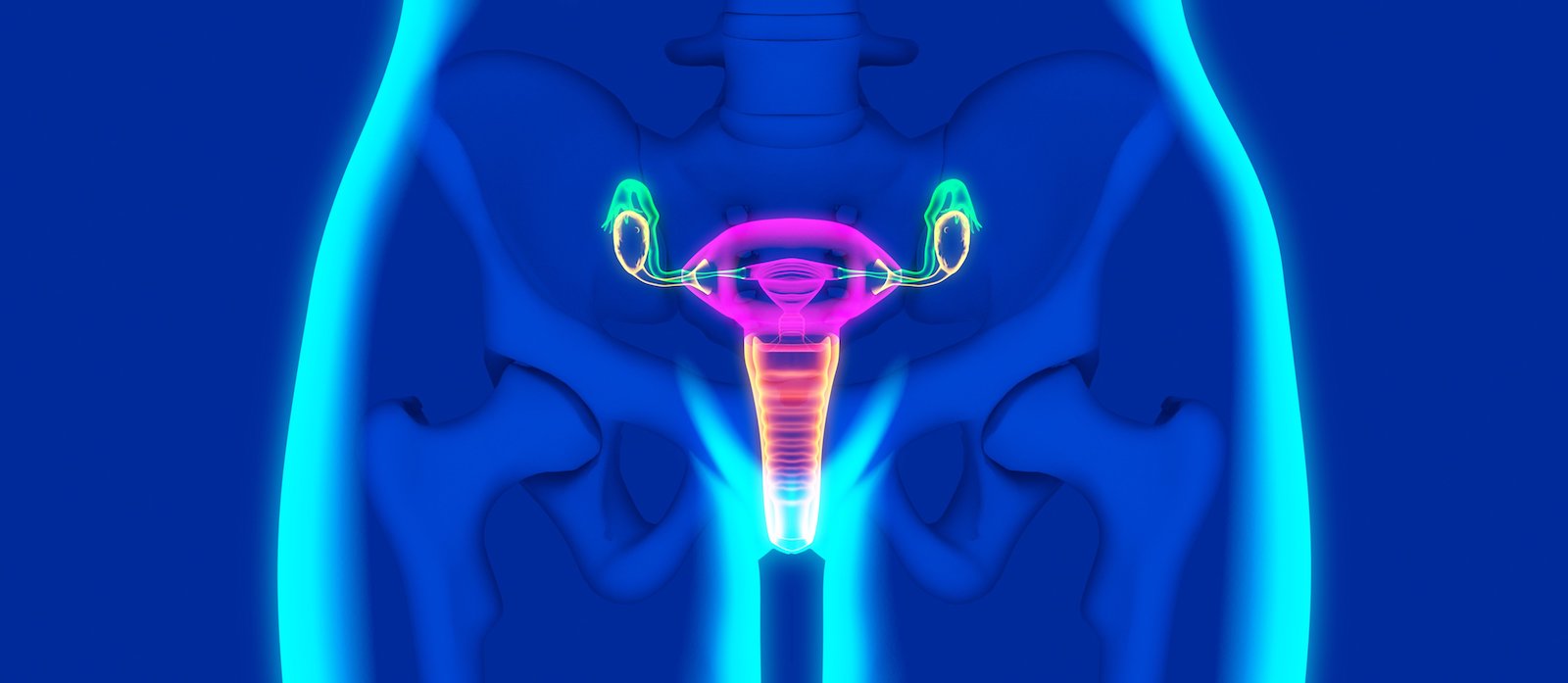Common causes of anal or rectal pain, and how to treat them
August 28, 2023
*10-minute read*

If you're looking at this story on your phone while sitting on the toilet, consider this an intervention. Perching on the throne for longer than five minutes at a time – and making a habit of it – can became a major pain in the butt … literally.
So, put down the phone, finish your business, and we’ll pick up where we left off – discussing an important personal health topic that can be as uncomfortable as, well, that hemorrhoid or anal fissure you may be hoping will just go away.
(Don’t forget to wash your hands and wipe off the phone. Bathrooms = bacteria!)
Talking about below-the-belt health conditions can seem like the utmost of private matters. In fact, most patients who visit UT Southwestern’s Benign Anorectal Clinic have already cycled through a roster of over-the-counter remedies that cost a lot of money, make a mess, and sometimes do not resolve their symptoms.
You shouldn’t feel embarrassed or reluctant to seek care. Our team of specialists has heard and seen it all, and together we provide comprehensive and compassionate care that will identify and treat the root cause of your symptoms.
But first, tips for healthier bowel movements
Any time you have bleeding, discharge, or significant pain from the anus, see a provider – especially if you have more than one of these symptoms and/or noticeable bowel changes. That said, follow these recommendations for better gut health and a more pleasant bathroom experience.
- Eat a balanced diet that includes 20-30 grams of fiber daily. Whole grains, fruit, and vegetables help “keep things moving” to prevent constipation and diarrhea.
- Stay hydrated. Your body will take extra fluid from stools if you are dehydrated, and that can lead to constipation. Severe diarrhea can also cause dehydration.
- Exercise regularly. Running, walking, and yoga can reduce the time it takes for stools to pass through the colon. The result is softer, swifter bowel movements.
- Don’t strain on the toilet. If you feel like you have to “go” but it just isn’t happening, don’t push it. Just try again later. Straining increases pressure on the anorectal tissue, which can lead to hemorrhoids.
- Limit toilet time. About 75% of people admit to bringing their phone to the toilet but the actual number is probably closer to 90%. If you don't want to give up your washroom quiet time, set an alarm on your phone for five minutes.
Common causes and treatments of anal pain

Hemorrhoids
Everyone has hemorrhoids – it's just a matter of whether yours are symptomatic. Hemorrhoids are veins in the rectum that are usually internal but can stick out through the rectum. When there is too much pressure on the veins, usually caused by straining during bowel movements or sitting for long periods of time, the hemorrhoids can become enlarged or swollen.
While symptomatic hemorrhoids are common, about 70% of patients who think they have them are diagnosed with something else.
Symptoms: Internal hemorrhoids typically don’t hurt but may bleed. External hemorrhoids can cause throbbing pressure and often don’t bleed unless they rupture. You may feel pain, irritation, itching, or hard lumps around your anus.
How it's diagnosed: External hemorrhoids are visible with a physical exam. For internal hemorrhoids, the provider may use a gloved finger to feel for bulging blood vessels or they may insert a small scope into the anus to see inside the rectum.
Treatment options: While taking stool softeners sounds like a solution, these medications may not solve the problem because they don’t increase how often you go and they don’t add water to your stools. Increasing fiber and water intake is a better bet for mild to moderate hemorrhoids. Some health care providers choose ointments or foam to soothe and reduce inflamed tissues. Severe hemorrhoids may require surgery, but about 80% of patients get relief without it if they are consistent with a conservative bowel regimen.
Anal fissures
Anal fissures are one of the most common causes of anal pain we see in our clinic – they are commonly self-misdiagnosed as hemorrhoids. These are cuts in the anal tissue that can occur after large, hard stools or profuse diarrhea episodes and can reopen without proper treatment.
Symptoms: Anal fissures cause burning, throbbing, sharp, and sometimes radiating pain. You may notice a few drops of blood in toilet water or while wiping, but fissures typically don’t bleed a lot.
How they’re diagnosed: Fissures may be visible on a physical exam. The provider may use a small scope, cotton-tipped swab, or gloved finger to assess the tissue.
Treatment options: Establishing healthier bowel habits is the top treatment option to address the cause of trauma. Moderate to severe fissures may require medication to help relax the external sphincter and anal muscles to encourage healing without reopening the wound on every bowel movement.
Fistulas and abscesses
Abscesses are pockets of pus that start near a gland and are sometimes called boils. Fistulas are abnormal tissue bridges that can form between the anal canal and the skin of the buttocks and infect the skin. If you have an abscess, there’s a 50% chance it could develop into a fistula.
Symptoms: An abscess may cause pain, anal discharge if spontaneously ruptured, redness, fevers, malaise, and inflammation. A fistula mimics the symptoms of an abscess but can reoccur in the same area of a previous abscess.
How it's diagnosed: The provider will examine externally for a first-time abscess and look internally with a small scope for recurrent abscesses. We use CT scans to determine the location of the abscess and MRI to evaluate for fistulas if the abscesses reoccur.
Treatment options: Along with better bowel habits, taking antibiotics can help relieve an abscess. Some may require incision and drainage. A fistula may require surgery, and the type of surgery may depend on the location of the fistula. The provider may recommend soaking in a warm bath a few times a day to aid discomfort.
**If you’re still reading in the restroom, it’s definitely time to get up. Seriously, we'll wait.**

Pelvic floor disorders
Pain can be caused by spasms of the pelvic floor muscles, anal sphincter, or rectum. These spasms should be evaluated by a pelvic floor expert.
A few other common PFDs include levator ani syndrome, which causes the pelvic floor muscles to constantly contract, and pelvic floor organ prolapse, which can cause pain, discomfort, pressure, and discharge due to abdominal organs pressing into and sometimes out of the pelvis.
People with PFDs are at increased risk of fissures and hemorrhoids due to constipation issues that can arise from spasms and cramping.
Symptoms: Electric, shooting anal pain; throbbing and pressure; organs visibly protruding from the rectum (rectal prolapse).
How it's diagnosed: Many PFDs can be diagnosed with a conversation about your symptoms, a physical exam, imaging, and possible anorectal manometry to understand how much contraction or prolapse is occurring. Some people experience more than one PFD at a time.
Treatment options: Depending on the condition, patients may benefit from physical therapy or surgery to support the pelvic floor muscles. UTSW’s pelvic floor disorders team is a national leader in PFD diagnosis, treatment, and ongoing therapy and we have established a pelvic clinic to streamline ongoing, advanced treatments. Our anorectal specialists work side-by-side with the Physical Medicine & Rehabilitation team to create personalized care plans that help patients strengthen their PFD muscles.
Pruritis ani
Latin for “itchy anus,” pruritis ani can be caused by simple factors such as changing laundry detergents, stress, aggressive wiping, or using a new body soap or perfume. Having an allergic reaction to medication can also be a culprit.
Symptoms: Itchiness and burning with wiping are common, and sometimes blood can be seen on toilet paper.
How it's diagnosed: The causes of pruritis ani can vary. It is typically diagnosed with an exam and can look like a rash around the perianal region.
Treatment options: To determine the cause, the provider will give you a list of things to remove from your diet or environment. Most of the time pruritis ani is caused by moisture, in which zinc oxide ointments are beneficial. In the event pruritis ani is a severe case, your provider may recommend prescription-strength medicated ointments.
Proctitis
This condition can present as rectal pain or rectal bleeding. If you’ve had pelvic radiation, it may damage the surrounding tissues, but that is a very rare side effect of radiation therapy. These side effects can appear years after completion of radiation therapy.
Inflammatory bowel disease can also cause proctitis, as can sexually transmitted infections (STIs).
Symptoms: Fecal urgency (feeling as if you have to go all the time), painful bowel movements, left-side pain, rectal bleeding or mucus, diarrhea, and rectal pressure or pain.
How it's diagnosed: The provider may recommend blood and stool samples along with a physical exam, anorectal swab, STI screening, and potentially an anoscopy, sigmoidoscopy, or colonoscopy.
Treatment options: Oral or enema anti-inflammatory medication can soothe irritation. Our first line treatment typically is to prescribe a sucralfate enema, which coats the lining of the rectum to help soothe and reduce inflammation.

Anal condyloma
Commonly associated with the human papilloma virus (HPV), a sexually transmitted infection, anal condyloma causes lesions around the perineum, which is the tissue between the genitals and anus. HPV can lie dormant for decades and may become active during times of intense stress or when a person is immunocompromised, such as during treatment for cancer or HIV/AIDS.
Symptoms: Itchy, nonbleeding perineal lesions that are tiny and tough to see with the naked eye. Left untreated, the lesions can turn into a form of anal cancer.
How it's diagnosed: A provider will use a small scope to examine the lesions and may take a small biopsy to determine the exact diagnosis.
Treatment options: Condyloma doesn’t go away on its own; you’ll need a procedure to remove the lesions with each recurrence. Patients who are immunocompromised will need follow-up care regularly to monitor and treat anorectal cancer. If you have not had HPV, talk with your healthcare provider about whether to get the HPV vaccine.
Anal or rectal cancer
Often, when a patient sees blood or feels pain in the anus, cancer is their first fear. Fewer than 1,000 people are diagnosed with anal cancer in the U.S. each year, and about 46,000 are diagnosed with rectal cancer – both are far less common than colorectal cancer, which will be diagnosed in an estimated 153,000 U.S. patients in 2023.
If you or your provider suspect you have cancer, we will refer you to the colorectal and anal cancer specialists at Harold C. Simmons Comprehensive Cancer Center for a full examination and personalized plan for next steps.
By and large, most anal irritations, inflammations, and infections are easy to identify and treat – if you’re willing to bring up your symptoms with your provider. Taking simple precautions like cutting commode time, drinking more water, and filling up on fiber can make a world of difference for your gastrointestinal health and prevent most uncomfortable anal pain conditions.
To talk with an expert about what’s bothering your bottom, call 214-645-8300 or request an appointment online.











